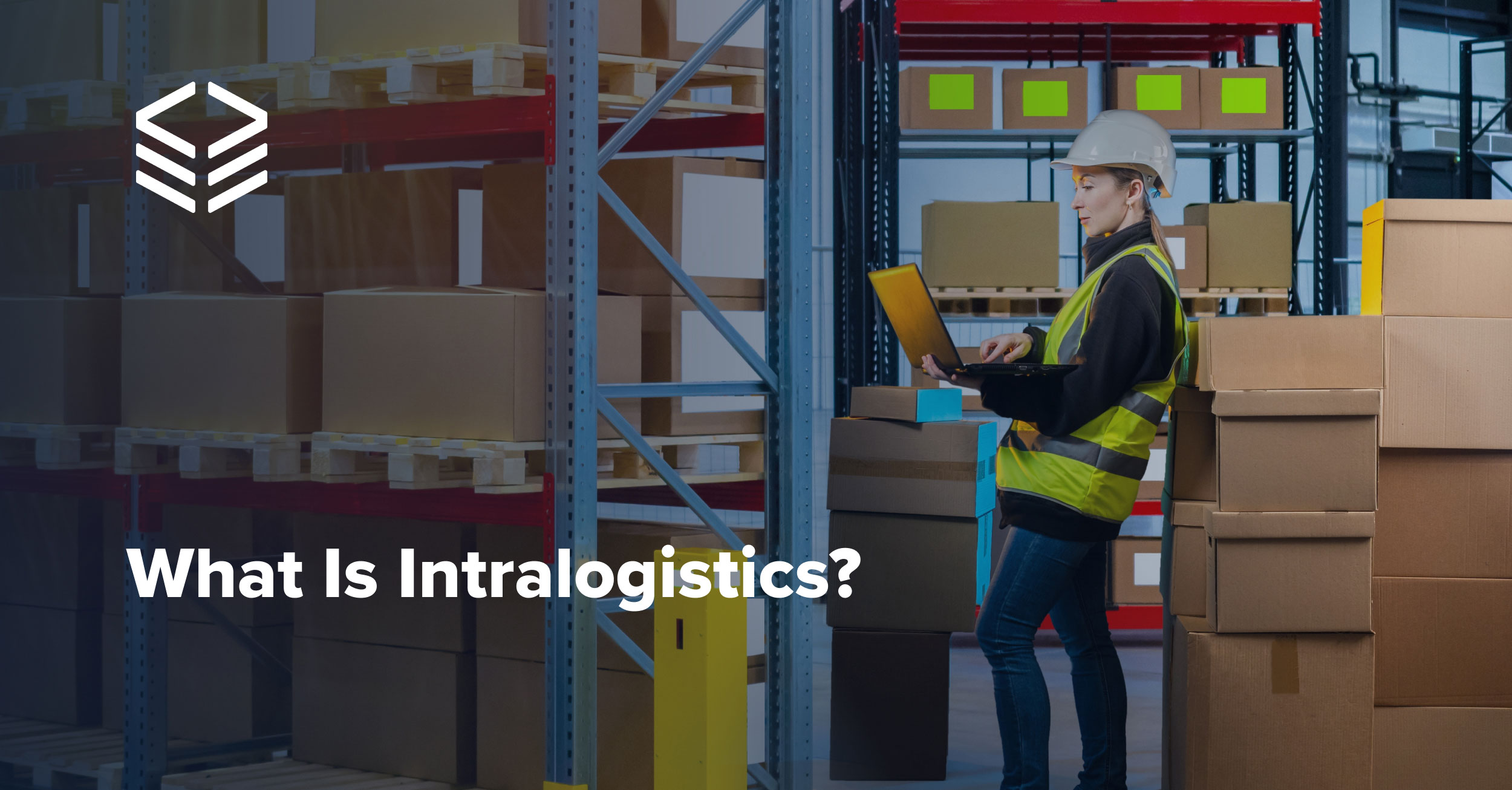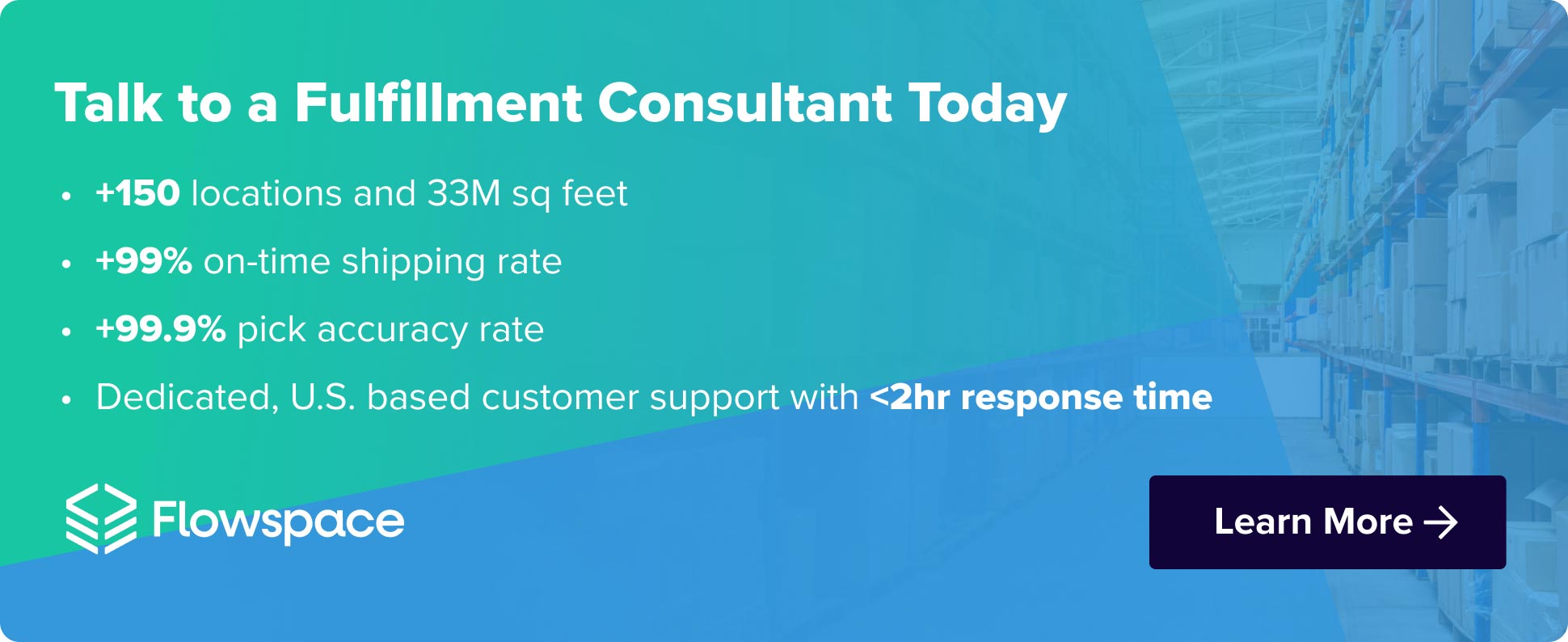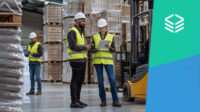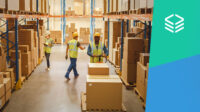
Forget traversing continents and oceans; intralogistics is about mastering the art of movement within your own four walls.
It’s the invisible engine that powers your business, orchestrating the seamless flow of goods and information inside your warehouse, distribution center, or even your factory floor. It’s not just about storing and moving things—it’s about optimizing every step of the journey to maximize efficiency, accuracy, and ultimately, your bottom line.
What Is Intralogistics?
Intralogistics is the art and science of managing the movement of materials, information, and people within your facility. From receiving raw materials to packing finished products and shipping them out the door, it’s the invisible hand that keeps your operation running smoothly and efficiently.
What Is the Difference Between Logistics and Intralogistics Processes?
Think of it as a Venn diagram. Logistics is the big picture, encompassing everything from sourcing materials to delivering to your customer’s doorstep. Intralogistics zooms in, focusing on the internal processes that make that final delivery possible. It’s the meticulous choreography that ensures the right parts reach the right place at the right time, minimizing delays and maximizing output.
What Processes are Considered Intralogistics?
Intralogistics includes:
- Storage & Warehousing: The stage where your inventory patiently awaits its cue. Optimizing space, streamlining layout, and ensuring efficient retrieval are the essential set designs.
- Material Handling: The nimble dancers, gliding effortlessly with forklifts, conveyors, and automated systems, keeping the flow of goods in rhythm.
- Order Fulfillment: The grand crescendo, where orders are picked, packed, and shipped with precision and speed. Accuracy and timeliness are the spotlight of this act.
- Information Management: The invisible threads that bind it all together. Tracking inventory, monitoring performance, and providing real-time data are the conductor’s score, guiding every movement.
Why Is Intralogistics Important?
E-commerce success hinges on efficient order fulfillment. Internal intralogistics processes, including the management of materials and information within warehouses, plays a crucial role towards efficient warehouse operation. A well-designed system optimizes storage and picking, reduces errors, and speeds up delivery. This translates to improved customer satisfaction, lower operational costs, and increased profitability. Investing in intralogistics is vital for e-commerce brands seeking to maintain a competitive edge and achieve sustainable growth.
What Are the Benefits of Intralogistics?
Investing in an intralogistics system isn’t just about ticking a box; it’s a strategic move that can deliver tangible benefits across your entire operation. Let’s delve into some key advantages:
Cost Savings
Streamlined processes, efficient storage, and optimized workflows translate to significant cost reductions throughout your supply chain. Every unnecessary movement eliminated is a penny saved, and every delay avoided is a dollar earned.
Specific cost savings include:
- Storage Optimization: Efficient warehouse layouts and utilization of space minimize rent and maintenance costs related to excess space.
- Reduced Errors: Streamlined warehouse management processes and technology like barcode scanning decrease picking and packing errors, minimizing returns and re-shipments.
- Lower Labor Costs: Automation for repetitive tasks frees up employees for higher-value activities, potentially reducing manpower requirements.
- Energy Efficiency: Implementing eco-friendly solutions like LED lighting and optimized equipment usage can lower energy bills.
Productivity Boost
Smoother operations, faster picking and packing, and empowered employees lead to a surge in productivity. Time saved on internal bottlenecks translates to more time dedicated to core business activities and driving growth.
Specific boosts to productivity include:
- Faster Order Fulfillment: Optimized operational efficiency and workflows from receiving to shipping lead to shorter processing times and quicker deliveries, improving customer satisfaction and potentially increasing order volume.
- Improved Inventory Management: Real-time tracking and data analytics minimize stockouts and overstocking, ensuring the right products are available at the right time.
- Enhanced Employee Efficiency: Ergonomic equipment and optimized processes reduce physical strain and fatigue, potentially boosting employee morale and productivity.
- Reduced Bottlenecks: Efficient material handling systems and optimized space utilization ensure smooth product flow, minimizing delays and production stoppages.
Customer Satisfaction
Accurate orders delivered on time are the applause you crave from your customers. Having an intralogistics solution ensures a harmonious experience, minimizing errors and delays that can sour the customer journey.
Specific reasons customer satisfaction might be increased include:
- Accurate Orders: Reduced picking and packing errors lead to fewer order discrepancies and customer complaints, enhancing brand reputation.
- Faster Deliveries: Optimized fulfillment processes allow for shorter delivery times, exceeding customer expectations and potentially increasing repeat business.
- Seamless Shopping Experience: A well-oiled intralogistics system translates to a smoother online shopping experience for customers, from placing orders to receiving them on time. Learn more about the on-time delivery KPI in our blog.
- Increased Transparency: Real-time tracking and order updates can empower customers to monitor their orders and feel confident in the delivery process.
Scalability and Agility
A well-designed intralogistics system is like a flexible dance routine, capable of adapting to changing demands and scaling with your business growth. It allows you to waltz gracefully into new markets and pivot effortlessly with market trends.
Specific benefits related to scalability and supply chain agility include:
- Flexible Systems: Adaptable intralogistics solutions can handle fluctuations in order volume and product types, allowing for growth without operational disruptions.
- Modular Design: Implementations can be scaled up or down easily, allowing you to adjust your intralogistics infrastructure to changing market demands.
- Data-Driven Decision Making: Real-time data insights on demand and inventory fluctuations empower you to make informed decisions and adapt your operations for future growth.
- Enhanced Collaboration: Integrated systems within your supply chain can improve overall supply chain management including communication and collaboration with suppliers and partners, increasing overall.
Intralogistics Trends to Look Out For
Just like the e-commerce landscape, intralogistics is constantly adapting and embracing new technologies and solutions. Here are some key trends that are shaping the future of how goods move within your warehouse:
Automation
Robots, drones, and AI-powered systems are no longer futuristic fantasies. They’re rapidly becoming reality, taking over routine tasks like picking, packing, and palletizing. This not only boosts efficiency and accuracy but also frees up valuable human resources for higher-level roles.
Imagine fleets of drones zipping through aisles, effortlessly retrieving items for human pickers, or autonomous forklifts seamlessly navigating the warehouse floor. Automation is the future of labor-intensive tasks, promising faster processing times and reduced operational costs.
Learn more about AI in supply chain management in our blog.
Data-driven Decision-making
Information is power, and in the realm of intralogistics, real-time data is king. Advanced analytics platforms are providing valuable insights into inventory levels, order patterns, and even potential equipment failures. This data empowers you to make informed decisions about everything from stock replenishment to optimizing workflow processes.
Imagine predicting peak demand weeks in advance, preventing stockouts, and ensuring every order flows smoothly through your system. Data-driven decision-making is the key to building proactive and adaptive intralogistics systems.
Sustainability
The e-commerce boom is not without its environmental consequences. Thankfully, intralogistics is embracing eco-friendly solutions to minimize its footprint. From energy-efficient equipment and LED lighting to green packaging materials and responsible waste management, the focus is shifting towards sustainable practices.
Imagine a warehouse powered by renewable energy, utilizing recycled materials, and minimizing its carbon footprint. Sustainability is not just a trend; it’s becoming a crucial consideration for environmentally conscious consumers and responsible businesses alike.
How Flowspace Helps Streamline Intralogistics
Flowspace tailors solutions to each warehouse’s unique needs and goals, crafting customized strategies that leverage data, technology, and sustainable practices.
Flowspace offers a comprehensive offering to achieve this vision:
- Real-time data platforms: Gain complete real-time inventory visibility into your operation with data-driven software. Identify inefficiencies, track inventory, and make informed decisions in real-time.
- Smart automation: Flowspace integrates the right mix of technologies, including AI-powered systems, to automate routine tasks and significantly boost efficiency.
- Sustainable practices: Networked locations bolster efficiency and sustainability, minimize shipping distance and related carbon emissions.
Get in touch today to find out how Flowspace can help you handle your intralogistics.







